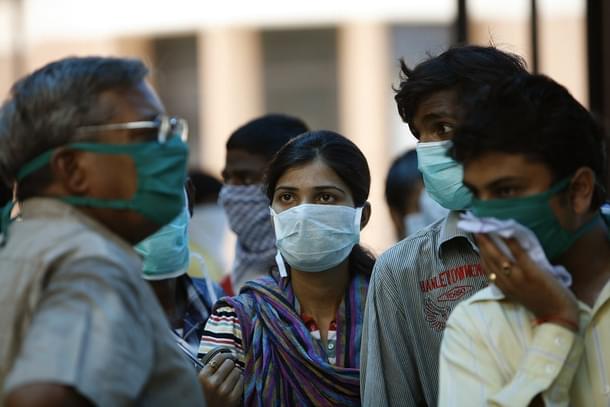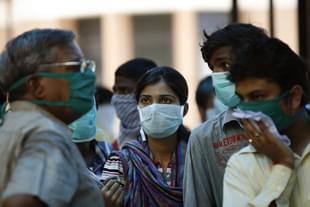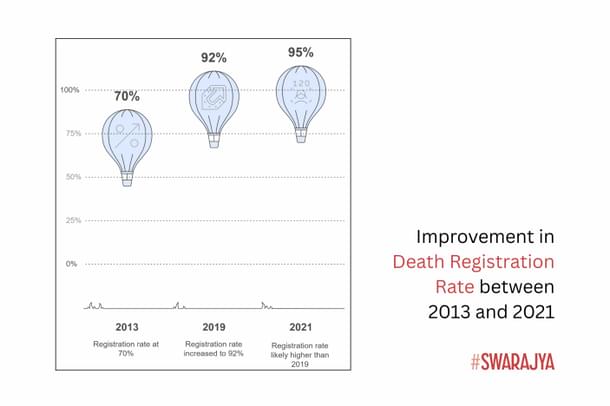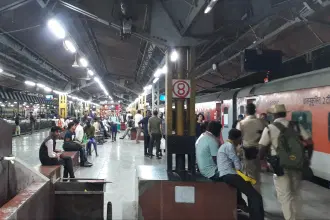Ideas
Covid Data Wars: Congress Cries 'Cover Up' Over Data Published By Government Itself
Urvashi A and Neeti C
May 31, 2025, 04:28 PM | Updated 04:28 PM IST
Save & read from anywhere!
Bookmark stories for easy access on any device or the Swarajya app.


When the Civil Registration System (CRS) released its 2021 report showing a sharp rise in deaths during the pandemic, it immediately became the centre of public and political focus.
What followed, however, was less a public health debate and more a political spectacle.
Congress leader Jairam Ramesh accused the Modi government of deliberately undercounting COVID-19 deaths by a staggering sixfold. Gujarat was singled out for being the epicentre of this supposed cover-up.
Such claims naturally raise eyebrows, not just of the numbers themselves, but of how they're being used. Are we looking at a data scandal, or a politicisation of publicly available statistics?
CRS 2021: Clear Numbers, Clouded Narratives
Let’s start at the source. The CRS is no recent invention. It was established under the Registration of Births and Deaths Act, 1969, in the Congress era itself. This system legally mandates the recording of every birth and death in India, with informants required to report deaths within 21 days to local registrars. It’s not optional. It’s not political. It’s a nationwide, continuous process of enumeration, regardless of who’s in power.

Each year, the CRS publishes a detailed report, typically with a two-year lag, compiled by the Office of the Registrar General of India. The methodology has remained consistent over decades. The only thing that has changed? The rate of registration, which has improved steadily.
In 2013, only 70 per cent of deaths were registered. By 2019, that had jumped to 92 per cent. By 2021, owing to heightened public awareness and the NDA government’s decision to make registration mandatory for COVID-19 compensation, the coverage was even better; a phenomenon that cannot find any parallels with the UPA regime.
The CRS 2021 report shows over 1.02 crore registered deaths, up from 81.15 lakh in 2020 and nearly 19 lakh above the 15-year average.
Corroborating this, the data by Sample Registration System (SRS) report shows that the crude death rate soared from 6 per 1,000 people in 2019–2020 to 7.5 in 2021, clearly reflecting the deadly impact of COVID’s second wave.
Interestingly, the Medical Certification of Cause of Death (MCCD) data, recorded 4.13 lakh COVID fatalities, already higher than the Health Ministry’s official count of 3.3 lakh for that year. But do higher numbers automatically point to a cover-up, or are they simply the result of better reporting?
Congress Discovers "Truth" Only After Data is Published, By the Government Itself
The 2021 rise in death figures are startling at first glance, but not entirely unexpected. Consider this: even in 2018, when the registration coverage was much lower, the death count rose from 64 lakh to 69.1 lakh. Year-on-year increases in registered deaths have long reflected improvements in reporting and demographic trends.
The CRS report is not some leaked whistleblower revelation, it is an official, transparent publication by the Office of the Registrar General of India. The figure of 20 lakh deaths that Congress stalwarts are accusing the Government of concealing were released by the Central government itself, demonstrating that the data has not been suppressed by official channels.
Moreover, other reports including that of the SRS reflect higher COVID-19 fatalities than the Health Ministry’s official bulletins. However, Congress seems to be relying on its age-old tactic of misguiding the public through selective outrage and half-truths.
Another number Congress eagerly wields is the gap between Health Ministry’s COVID death tally (3.3 lakh) and the Medical Certification of Cause of Death (MCCD) report’s figure (4.13 lakh for COVID deaths in 2021).
What Congress failed to notice and highlight, that only 23 per cent of deaths in India are medically certified. That leaves a massive chunk, especially from rural areas and home deaths, without a formal cause listed. Naturally, this affects the COVID count.
Still, states have audit committees to reconcile these numbers, and backlog cases are transparently added later. The MCCD figure is, in fact, higher because of this reconciliation, not despite it.
More Deaths? Or Just More Honesty?
India’s death registration has gotten a lot better, especially in the past decade. One big reason is the COVID compensation which was tied to official registration, so families had an incentive and a right to ensure every loss was recorded. Compare that to the UPA years, when about 30 per cent of deaths went uncounted and data gaps were the norm, not the exception.
So yes, the spike in numbers in 2021 reflects tragedy, but it also reflects a system finally doing its job. Congress calling it a cover-up is ironic since they’re attacking a process that’s far more transparent than anything they left behind.
Further, COVID-19 changed how Indians interacted with healthcare. Pre-pandemic, many avoided hospitals for such ailments, with home deaths often going unregistered. But in 2021, COVID's second wave pushed more people into hospitals, where deaths are mandatorily recorded, leading to a natural spike in registered deaths under the CRS.
One of the most overlooked reasons behind the spike in deaths isn’t flawed data, it’s the virus’s lasting assault on heart health. Severe COVID-19 infections significantly raised the risk of heart attacks and strokes for years, even in people with no prior conditions. But while the Central government moved swiftly to deploy Covaxin and Covishield, Rahul Gandhi dismissed them as “BJP vaccines” and instead bizarrely campaigned for Pfizer. The Pfizer vaccine, ironically, is now linked to serious cardiovascular side effects as reported by the United States’ National Institute Of Health.
Also, the CRS captures all-cause mortality, not just COVID-19 deaths. Disruptions in routine healthcare, limited access to hospitals for non-COVID illnesses, delays in treatment due to lockdowns, and increased registration compliance all contributed to the higher numbers.
But nuance rarely fits into political soundbites. Instead of recognising these layers, Congress seemed eager to lump all excess deaths into one bucket.
Let’s Talk About Gujarat, Again
Predictably, Congress zeroed in on Gujarat, accusing the state of undercounting COVID deaths “by 33 times.”
The allegation isn't backed by any verifiable method.
Here’s what Gujarat actually did. Like every state, it followed the Indian Council of Medical Research/WHO protocols for COVID death classification. When audits showed missing records, figures were reconciled and updated by the state government. Gujarat’s total death registration also rose significantly, due to the state’s improved coverage.
Calling the 2021 CRS report a “cover-up”, twists a hard-earned gain in data transparency into a weapon of political fiction. Congress framing this as a “cover-up” ignores the complexities of pandemic-era data collection, challenges which affected not just India but inter-governmental organisations like WHO, while projecting the international estimates.
The Modi government didn’t bury the numbers, it published them, knowing full well they would show the devastating toll of the pandemic. If anything, the CRS data shows a system that is finally working, making sure no death goes uncounted. The real problem isn’t the numbers, it’s the attempt to turn every statistic into a scandal.
Urvashi A is a political observer and a budding lawyer. Neeti C is an independent political researcher from Presidency University (Kolkata).





